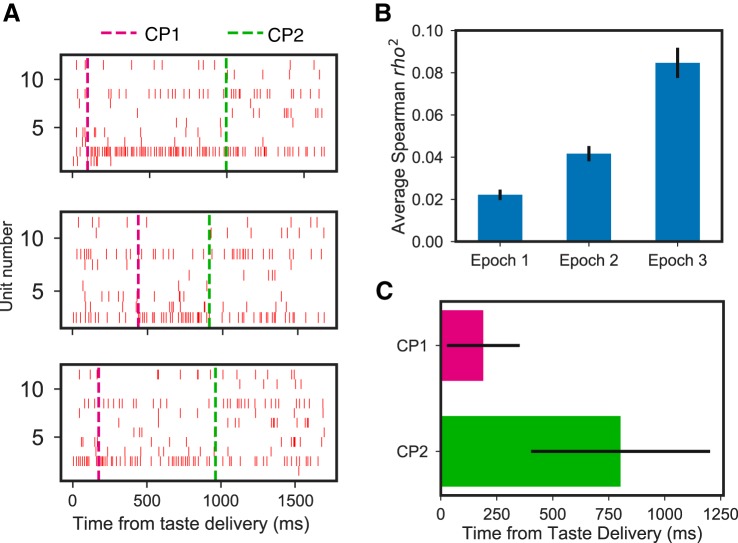Fig. 6.
Epochs of mouse cortical taste responses reflect coherent state sequences in gustatory cortical (GC) ensembles. A: representative single trials of the response of 1 GC ensemble (1 neuron per row; hash marks = individual action potentials) to the taste of quinine, revealing sudden, simultaneous changes in firing rates in several neurons. Magenta and green dashed lines indicate the 1st change point (CP1: from taste detection to identity) and 2nd change point (CP2: from taste identity to palatability), respectively. B: coefficient of determination (r2) between mean firing rates and palatability for each of the 3 states demonstrate, consistent with our hypotheses and work on rat GC, that palatability coding is achieved with state 3 and that taste specificity (which necessarily connotes a basic level of non-0 palatability coding) is achieved with state 2. C: average state-to-state transition times across all trials revealed through change-point analysis.

